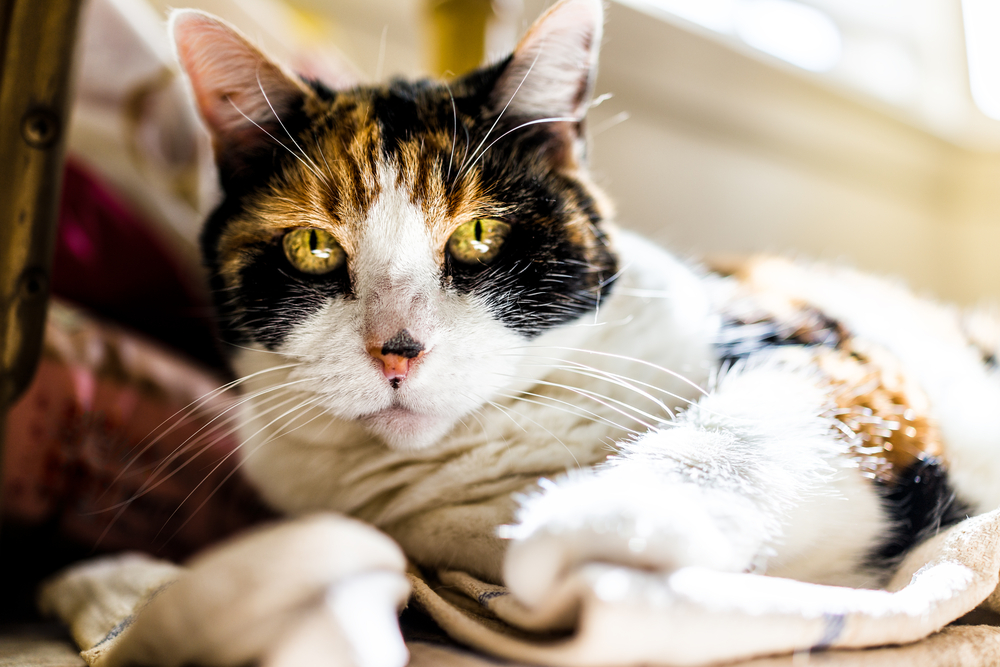If your senior feline seems more forgetful or your aging pooch is perplexed by everyday situations, they may be suffering from cognitive dysfunction syndrome (CDS). This common but little-known neurodegenerative disorder is similar to Alzheimer’s disease in people and can affect your geriatric pet’s quality of life.
Fortunately, you can help your four-legged friend cope with their cognitive impairment. Learn more about CDS in this guide from Family Veterinary Care of Oakdale.
Grey whiskers, cloudy thoughts—cognitive dysfunction in pets
Although no test that definitively diagnoses CDS in living pets is available, researchers believe that the condition affects a large majority of senior and geriatric pets, including:
- 28% of 11- to 12-year-old dogs
- 68% of 15- to 16-year-old dogs
- 36% of 11- to 21-year-old cats
Like Alzheimer’s disease in people, CDS is a progressive condition that worsens over time. As affected pets age, their visible dementia-like signs (e.g., behavior changes) become more apparent to their owners. These changes occur as the pet’s brain undergoes oxidative damage from a buildup of toxic free radicals. While a young, healthy pet’s body can block these harmful processes, age-related anatomical changes in the brain (e.g., brain mass reduction, neuron death, and plaque deposits) and body leave senior pets defenseless against the progressive deterioration and decline.
Can you help me? The trouble with CDS diagnosis in pets
CDS recognition and diagnosis can be challenging, because senior pets experience other age-related conditions with CDS-like signs, and may suffer simultaneously from multiple conditions. CDS often may be overlooked for a more obvious diagnosis, such as an endocrine-related disease, sensory loss, kidney failure, or vestibular dysfunction. Owner awareness can help ensure an early CDS diagnosis and appropriate care and attention for their pet.
What’s going on? CDS signs in pets
The acronym DISHAAL is often used to describe the most common CDS signs in dogs and cats. They include:
- Disorientation — Pets appear confused or lost in familiar environments.
- Abnormal interactions — Pets may become more fearful, aggressive, or asocial.
- Sleep disturbances — Pets may be restless at night and commonly will pace and vocalize.
- House soiling — Pets may have accidents close to the litter box or immediately after returning indoors, often right in front of the owner.
- Activity changes — Pets may become lethargic, hyperactive, or engage in repetitive behavior (e.g., circling, pacing, or licking).
- Anxiety — Pets may seem clingy or nervous.
- Learning or memory changes — Pets may struggle with, or appear to forget, trained behaviors and to find learning new ones difficult.
If your pet is exhibiting any CDS signs, schedule an appointment at Family Veterinary Care of Oakdale for a full examination. A diagnostic workup (i.e., blood work, imaging) is usually necessary to rule out other medical causes.
CDS in dogs
CDS dogs frequently wander away from home and may be injured or killed. Always supervise your senior pet during outdoor activities. CDS-affected dogs should be restricted to a fenced in yard or kept on leash so they do not become lost.
Closely monitor your senior dog around other pets and small children. Because CDS dogs may not recognize family and friends and their affectionate gestures, and arthritis or chronic pain can make petting or play painful, your dog may snap or bite out of self defense.
CDS in cats
Cats express their CDS similarly to dogs, with one large exception—increased vocalization, especially at night. Vocalization is often the initial, most prevalent sign and is so common that some experts suggest revising the acronym to VISHDAAL.
House soiling also is commonly reported in cats. However, because cats often experience stress-related urinary conditions and develop anxiety or pain-related aversions to their litter box, a potential CDS diagnosis can be unintentionally overlooked.
Managing CDS in pets
Although CDS has no cure, you can support your pet and make the inevitable progression less stressful and traumatic. Your veterinarian will make specific recommendations based on your pet’s individual needs, which may include:
- Mental engagement — Incorporate learning, novelty, and play into your pet’s regular routine. Regular mental stimulation throughout life may help reduce CDS likelihood or severity as your pet ages.
- Diet — A therapeutic pet diet high in antioxidants and medium chain triglycerides (MCTs) has been shown to improve brain health and protect against, or potentially reverse, oxidative damage.
- Medication — Selegiline (i.e., Anipryl) is a medication used for reducing CDS signs in dogs. Anti-anxiety medications may also be prescribed for stressed or nervous pets.
- Supplements — Your veterinarian may recommend supplements, such as antioxidants, omega-3 fatty acids, and s-adenosylmethionine (SAM-e), that support cognitive health.
- Household modifications — Ensure your pet can easily locate and access their primary resources, including food, water, and litter box. Close off unused home areas to prevent your pet from wandering and use a gate to keep them away from steps or stairs. Supervise your pet at all times while outdoors, and ensure they are microchipped and wearing current identification tags.
Although you will feel sad having to mourn the loss of your pet’s “old self,” you must remember that they need you—their best friend—more than ever.
If you’re concerned about your senior pet’s health or have questions about CDS, contact Family Veterinary Care of Oakdale.










Leave A Comment